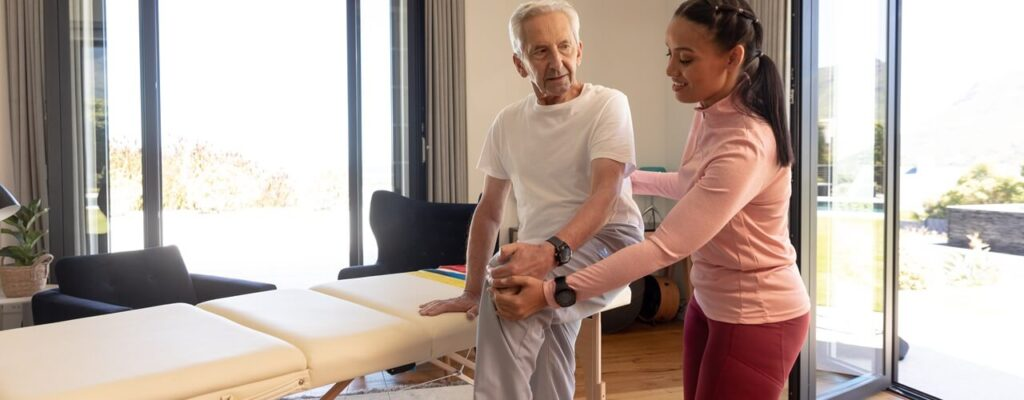Walk with Confidence Through Gait Training for Parkinson’s Disease
When our patient, we’ll call him Mr. Paul, came to our practice, he had tried several treatments for his Parkinson’s disease. Despite some improvements from his medication, he continued to have trouble walking and getting around the way he wanted. So, when his doctor suggested he try gait training for Parkinson’s disease, our team knew where to start.
After weeks of dedicated efforts, Mr. Paul saw significant changes in his abilities and outlook. His balance improved, which led to increased mobility and independence. Regaining these abilities allowed him to re-engage in activities he enjoyed, significantly boosting his confidence and enhancing his overall well-being.
Keep reading to explore gait training for Parkinson’s disease and learn how it can work for you, too.
Find Your Footing with Gait Training for Parkinson’s Disease
Parkinson’s disease is a brain disorder that leads to shaking, stiffness, and difficulty with walking, balance, and coordination. When the nerve cells in the brain that produce dopamine become impaired or die, it leads to difficulty making and controlling movements. As the disease progresses, it can significantly interfere with daily activities.
The exact cause of Parkinson’s disease is unknown, but several key factors seem to play a role.
- Age: 60 years of age or older.
- Environmental factors: Exposure to certain toxins.
- Genetics: Having a close relative with Parkinson’s disease.
Gait training is a type of physical therapy designed to improve your ability to stand and walk. It’s particularly beneficial for individuals with Parkinson’s disease because it targets the specific challenges they face, such as balance issues and gait abnormalities. The goal is to increase mobility, safety, and independence.
Our physical therapists use a variety of exercises and therapies during gait training.
Walking Drills to Improve Stride Length and Speed
Exercises focused on increasing the length of each step and the speed at which a person walks. For someone with Parkinsons, this could look like:
Practicing walking over marked lines on the floor to encourage longer strides
Using a metronome to set a pace for stepping
Walking in different directions like forward, backward, and side-to-side to improve the ability to stop, start, and change directions
Balance Training to Reduce the Risk of Falls
Individuals with Parkinson’s disease face an increased risk of falls associated with the effects of the disease. Our physical therapists often design exercises that simulate real-life scenarios that could lead to falls by teaching strategies to navigate them safely. These activities challenge the body’s balance systems to improve coordination. Balance exercises may include:
- Practicing movements that isolate the upper and lower body to aid in daily self-care activities
- Dressing and undressing with shirts and jackets
- Brushing or styling hair
- Drying off the lower body after bathing
- Walking around and over obstacles
- Incorporating reaching activities while standing in a staggered stance, feet together, or while moving
- Picking up food items and putting them in the cart while grocery shopping
- Completing the movements of opening a car door, sitting down, and closing the car door
Strength Training to Build Muscle Around Key Joints
We focus on building the muscles that support key joints for stability, like the hips, knees, and ankles. Strengthening exercises help to manage the rigidity and weakness caused by the disease.
- Resistance bands
- Free weights
- Body-weight exercises
Stretching Exercises to Improve Range of Motion
Stretching major muscle groups with a focus on those particularly affected by the disease, like the legs, back, and shoulders. These exercises can reduce stiffness, improve posture, and increase mobility for both walking and daily activities.
Lasting and Supportive Help with Unified Rehabilitation
Our comprehensive gait training program can significantly improve the balance, mobility, and overall quality of life of patients with Parkinson’s disease. With personalized guidance from our physical therapists, we’ll help you learn to navigate the challenges of Parkinson’s with greater ease and confidence.


